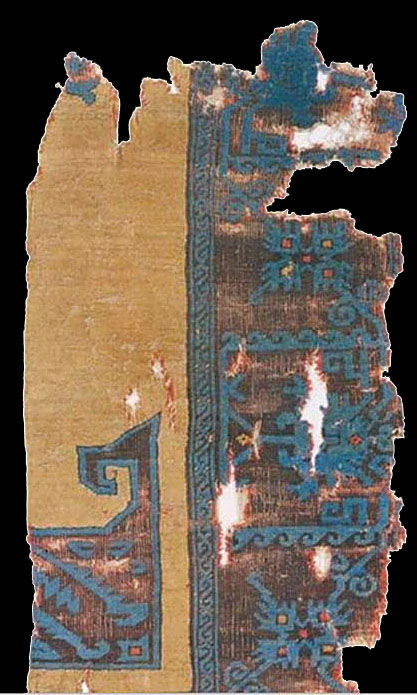|
Heinrich Kirchheim's “Orient Stars” Plate no: 213
Camel Ground with Blue-Black Border Corner Fragment
Anatolia 15th century
41 x91 cm
Symmetrically knotted with wool
warp and
weft
While not enough of the rug remains to enable a
reconstruction of the whole, this smallest fragment in the collection
commands our attention.
There is no dazzling display of beautiful
colours. The ragged pal-mette border - not a particularly rare type -
contains most of what can be seen of the design. The only recognisable
field design is a corner section, also not unfamiliar. We have a quietly
understated, tranquil fragment which carries tremendous strength and
presence; perhaps the most compelling reflection this fragment brings in
the certainty that the whole must have been truly astounding.
The beige exemplifies what I believe to be the
quality of early colour, the dye being fully saturated, the colour soft
and clear, yet very strong.
Lit: Heinrich Kirchheim's “Orient Stars” Plate
no: 213
|

